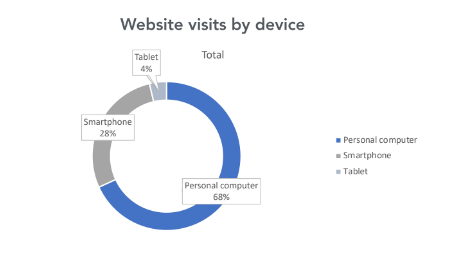An Evaluation of B2B Media Engagement Behavior by the Numbers
Last updated: February 24, 2023
Last week our CRO, James Capo, presented on B2B media engagement at the BIMS conference in Fort Lauderdale, FL. Omeda used a compilation of the top 20 email volumes from January through June of 2018 to gather directional results and behavioral norms from these email campaigns. They consisted of over 33,000 deployments containing more than 700,000 million emails sent. Some of the main facts and findings are below.
Surveys performed best in terms of percent opened, but Digital Magazines were the strongest performers for Click Through Rates
On average, all the email types had a 13.5 percent open rate. Email Surveys were the strongest in terms of percent open coming in at 18 percent. Advertiser Promotion emails followed at a close second of 17.7 percent. The top performers were as follows:
| Campaign Type | Open Rate |
|---|---|
| Surveys | 18.0% |
| Advertiser Promotion | 17.7% |
| Newsletters | 16.2% |
| Reader Service | 15.6% |
| Events | 15.1% |
Further exploring the numbers, the Click Through Rates (CTRs) for different email campaigns showed different statistics and importance about driving viewers to the actual sites through the email deployments. For example, surveys had the highest open rate at 18 percent, but only had a 6 percent CTR. On average for all types of emails, the CTR was 16.1 percent. Digital Magazine deployments were the strongest performers, coming much higher than average with a 20.7 percent CTR. Marketing and Newsletter emails were close behind. The five types with the highest CTRs were:
Check out the Email Engagement Report for the latest benchmarks & best practices
| Campaign Type | Click Through Rate |
|---|---|
| Digital Magazine | 20.7% |
| Newsletters | 18.7% |
| Marketing | 18.5% |
| Audience Promotion | 17.1% |
| Advertiser Promotion | 12.6% |
Every email deployment type has different purposes and strengths and weaknesses that go along with them. In general from the data Omeda gathered, Newsletters were strong performers in terms of open rates and CTRs.
Thursday is the day with the highest CTRs across email types
Knowing which types of emails resonate best with your audience is important, but flighting the best days to send them is also very helpful information to have. Overall, Thursdays had the highest CTR with 16.8 percent. This also held true for the newsletters category, which is the largest deployment type in the sample gathered and had the most reactions from audience viewers. Thursday appeared to be the strongest day in terms of CTR with the rate being 19.6 percent (compared to the 18.7 percent average) for the category. It is interesting to note that Sundays had the highest open rate of 15.8 percent, but the lowest CTR of 14.7 percent. This could be viewers taking a glimpse of the email during the weekend to then gather information and determine if it is something to explore more in the following work week.
Emails delivered to C-level executives had the most response during the weekend days
Narrowing your audience down further is beneficial for targeting efforts moving forward. Of course, C-level executives are an important audience to monitor for email engagement. Weekend days were the strongest for both open rates and CTRs. Saturdays had the highest open rates with a 17.2 percent opened, which was over a percent higher than all other days. Sundays had the highest CTR responses with an average of 16.5 percent.
For newsletters specifically, the top performing type of email deployment, Sundays were significantly higher for CTR reactions from C-level individuals. On average, the CTR came in at 27.9 percent, which was 9 percent higher than the second top performing day, Monday, at 19 percent.
Known C-level web page visitors is highest on Tuesdays
Shifting into web data and behaviors, knowing which days of the week drive the highest CTR is advantageous, but identifying visitors as known site viewers takes your data a step further and helps to truly target audience members that you want to reach. For C-level visitors, it was interesting to see that known visits were highest by this demographic on Tuesdays at 20 percent. This was followed by Thursday, Wednesday, and Monday with 18 percent, 17 percent and 16 percent known visits respectively.
This is important to call out because although CTRs are highest for C-level employees on the weekends, the number of known visits being generated are much lower during those days. Both Saturday and Sunday had know visits of seven percent, which is much lower than the weekdays.
Website visits are still being led by desktop devices
Overall, website visits are important to monitor in order to recognize the ways in which your audience is interacting with your web pages. This will help to optimize their experience on the site and format the site in a way that is most beneficial for visitors. From Omeda’s sample, 68 percent of web page visits were done with a personal computer. That was followed by 28 percent being from smartphones and only four percent coming from tablets.

In general, there is a lot of information that can be gathered through the analysis of email deployments that are being done. Through analyzing the results of these deployments, a better understanding of your audience and followers can be drawn. This will help to create email and marketing campaigns that will better target desired audiences and fit the needs that they are looking for. Omeda has a full suite of tools that can help to do just that. Reach out to clientsuccess@omeda.com for more information.
Subscribe to our newsletter
Sign up to get our latest articles sent directly to your inbox.